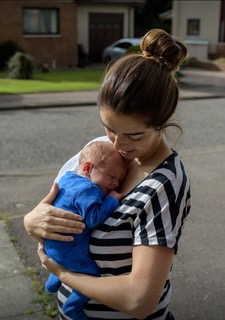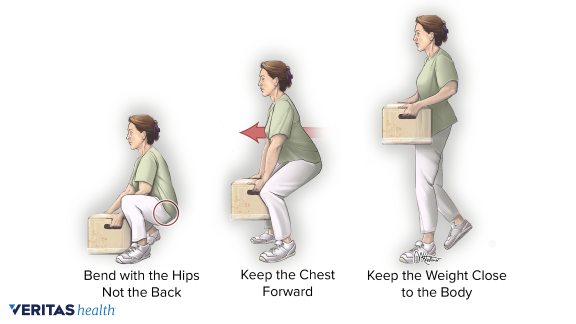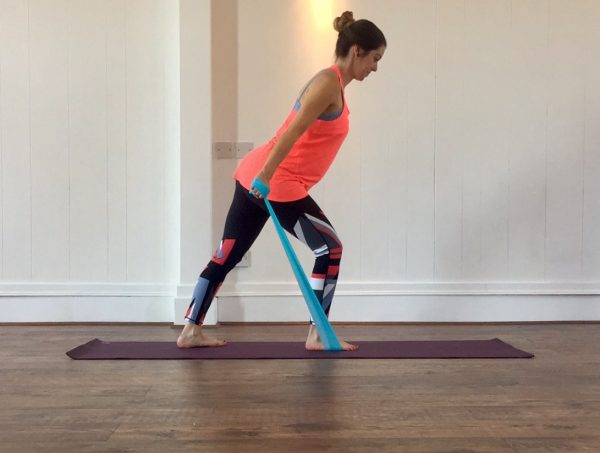How soon can you exercise after having a caesarean section? Whether it was planned or an emergency, a c-section is major abdominal surgery. Despite this you are still often home with baby a couple of days later and trying to get on with motherhood and house tasks.
With any other abdominal or general surgery we would advocate rest for an initial 6 week period and then a phased return. In this event however, a newborn baby does not allow for this so you must ensure you take good care of yourself and follow some specific guidelines.
Doing things too quickly can set back your recovery, cause pain or damage. Although frustrating, getting things right from the start will make recovery faster and better in the long run. Controversially, complete rest is not advocated as gentle exercise such as walking promotes circulation. This is important for your wound and recovery internally, and ensures your muscles throughout the body are stimulated, as well as gentle stretching and mobility to the abdominal area, AND also keeping your other muscles activated.

What happens when you have a caesarean section?
An incision is made into the skin in the lower abdominal region. This wound goes through the skin, fat, fascia, connective tissue and into the abdominal cavity. The muscles are moved apart and the bladder is moved downwards to reveal the uterus. An incision is made into the uterus where the baby is removed from. All these layers are then stitched up to finish the procedure.
Why you need to slow down
These multiple layers of sutures means that there are multiple layers of healing required (around 7 layers deep of tissues to heal!). Scar tissue will form at each wound site within each layer and this causes the tissues to be tight, restrictive, and less likely to function as they used to. Scarring also affects how the muscles glide during a muscle contraction and as a result the muscles are weak with a lack of stabilisation and support. As these tissues were already disrupted with the baby growing over the 9 months, they will take longer to heal and return to their normal state.
The wound can remain numb or with reduced sensation for a considerable time following surgery. This is due to the disruption to the sensory nerves around the wound site. This impaired feeling also affects the muscles and tissues because you have less awareness and ability to feel the muscles and therefore are less likely to be able to activate them during core exercises.
This is why core activation exercises are SO SO important postnatally and are essential to ensuring an efficient and proper recovery for your body.
Having a C-section does not mean your pelvic floor is off the hook! In fact, a lot of the stretching to the pelvic floor is done during pregnancy itself as your baby grows bigger and bears down through the pelvis. As your baby normally makes a head for the exit from approx. 36 weeks onwards, it is likely your baby was already heading that way and increasing the strain to these muscles prior to your c-section.
Stress incontinence (peeing by accident upon sneezing, coughing lifting etc) occurs in around 4% of women following c-section, and the risk of a urinary tract infection is 1 per 1000 (NICE 2004). Taking the time to perform your pelvic floor muscle exercises, and avoiding any heavy strain to your body, or returning to exercise too quickly will help lower your risk of incontinence.
When can you return to exercise?
Always get clearance from your G.P and/or physiotherapist before returning to exercise after a C-section. These are only approximate guidelines and will differ for each individual based on your specific surgery, complications, and fitness levels.
| Exercise Suggestions | Specific Criteria | |
| 0 days + | Gentle walking
Pelvic floor exercises |
After clearance from medical staff
After catheter removal and return of normal urinary flow |
| 1-3 days + | Core muscle engagement | After correct technique taught
No severe wound pain |
| 6 weeks + | Low impact exercise such as walking, cycling, pilates, yoga, body weight conditioning | No postpartum complications
Wound fully healed No wound pain No pain upon deep breathing No pain twisting, turning, bending |
| 12 weeks + | Impact exercise such as running, circuits, HIIT, dancing | As per all of above
No urinary or bowel problems No bleeding No pain in wound, pelvic floor or elsewhere No feelings of bearing down No doubts or concerns about wound, pelvic floor, or any other body region postpartum |
| 16 weeks + | Contact and high risk sports such as rugby, gymnastics, figure skating, | No issues in abdominal, pelvic, lower back regions
Completed exercise as per the earlier guidelines to promote a phased return |
Returning to high impact exercise like running should be done with caution and only when you feel ready. There should be no aches/pains/or other symptoms. The Return to Running Postnatally post here explains more.
DOs and DONTs following a C-section:
DO:
- Take your time!
- Listen to your body. If something doesn’t feel right, slow down again, avoid that task, modify, avoid as necessary.
- Move slowly initially.
- Protect your scar with dressings (if advised) and extra big pants
- Begin your pelvic floor exercises early, after your catheter is removed.
- Begin engaging your core gently as soon as possible.
- Log roll to get out of bed. This is the technique of rolling on to your side first, then sitting up.
- Minimise any lifting or strenuous tasks.
- Widen your feet stance to increase your balance.
- Bend at your knees if you have to bend down (see image below).
- Stand in a semi lunge position if you need to bend down.

This image shows the correct way to bend and lift objects, even if they are not heavy. This reduces the strain through your wound, abdominals, and protects your lower back too. Image taken from www.spine-health.com.
DON’T:
- Put any pressure on yourself for anything.
- Bend, twist, overreach, stretch, strain or stress.
- Bend forwards, lean down and lift (see image above).
- Move too quickly.
- Wear any tight underwear or trousers that may rub at the wound
- Do any strenuous housework such as hoovering, washing, changing beds or lifting.
- Exercise if your wound has not healed.
- Lift anything heavier than your baby
- Perform any exercise that resembles a “crunch” or “plank”.
- Perform any overhead exercises such as shoulder press.
- Perform any exercise that increases the loading down on your abdomen and pelvic floor such as those involving holding weights on your shoulders e.g. back squats with a bar on your shoulders.
Watch out for these post C-section & seek help:
Any wound issues. This could be increased pain, swelling, redness, heat, fluid oozing, or the wound not healing up. Contact your GP.
Any flu like symptoms, temperature, or feeling untoward. This could be a sign of infection and should be checked out by your GP.
Pain in your abdominal muscles, or bulging/doming at your tummy. This could be because they are still stretched and weak and cannot cope with the strain of your movements/lifting , etc. See a Chartered postnatal Physiotherapist.
How to get started:
- Follow the DOs and DONTs above
- Try to get plenty of rest, as well as actual sleep time
- Eat a well balanced, nutritious diet
- Take any painkillers or medication advised by the medical staff
- Once the wound has healed gently touch and massage the skin around it to encourage return of sensation and to minimise tightness/scar tissue
- Ensure you see a postnatal physiotherapist at 6 weeks postpartum for a check up & onward advice
-
Complete my Postnatal pilates classes on YouTube at home!

Gentle bodyweight exercises with light resistance bands can be a good starting point to gradually load the muscles and promote core activation.
Post C-section exercises
- Begin pelvic floor muscle exercises: Start by gently lifting up from your back passage all the way to your front then relax completely. Repeat 10 times. Repeat this exercise again and gradually try to hold for longer aiming for 10 seconds x 10. See All you need to know about your pelvic floor for more information.
- Begin core muscle engagement: Visualise your hip bones at the front coming together towards each other across your stomach. Gently try to draw the lower stomach muscles in slightly and then let go again. Repeat for 10 times and then aim to hold this for longer as able.
- Begin gentle full body exercises: These may include bodyweight squats, lunges, and upper body work with resistance bands or small weights. Ensure a good posture and no strain to your abdominals/lower back region.
-
Try these daily stretches for spine mobility or these postnatal pilates videos at home
References:
- NICE 2004. National Institute of Clinical Excellence guidelines 2004.
- https://www.spine-health.com.




